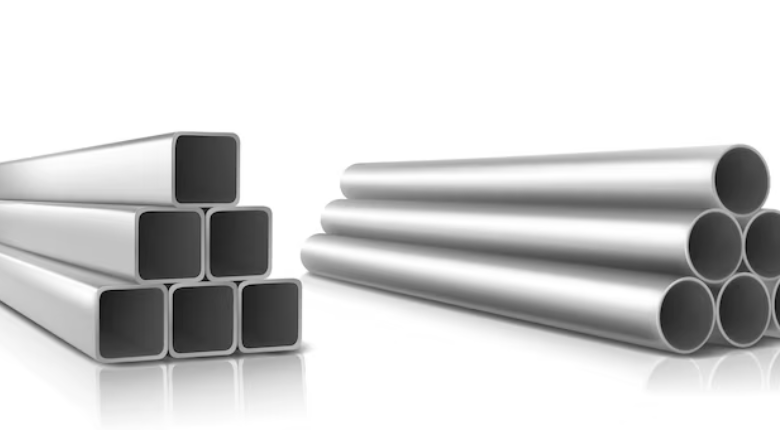Using 316 Stainless Steel Tubes in Marine, Chemical, and Food-Grade Applications

There’s no easy way to say it: some environments eat metal alive. Saltwater, acid vapours, cleaning agents—materials don’t just degrade; they crumble when exposed for long enough to the above substances. Choosing the wrong tubing in these spaces isn’t just a mistake. It’s an ongoing liability.
That’s why 316 grade stainless steel tubes are shown in all the right places. It’s not glamorous. But it works where others fail. The kind of failure that creeps in quietly—an unseen crack, a hidden spot of rust, something that doesn’t announce itself until production halts or seawater starts leaking.
The addition of molybdenum in 316 changes the game. It gives the alloy more bite against corrosion, especially in places where chlorine or salt is part of the equation. That’s the real difference. It’s not that 304 stainless doesn’t work—it’s that 316 holds out longer under pressure. Literally and chemically.
Let’s take a closer look at three industries that rely on it every day—marine, chemical processing, and food production.
Marine Environments: No Room for Corrosion
Anyone who’s worked around salt air knows how fast it destroys things. Hinges seize. Valves freeze. The deck stains brown, and if you’re lucky, you catch the damage before it spreads deeper.
Out on the docks or under the hull, 316 tubing doesn’t flinch.
- It handles seawater exposure better than most steels on the market.
- Common in ballast systems, pump lines, and seawater coolers.
- Stays intact even after constant splash or immersion.
What really matters here isn’t surface rust—it’s internal pitting. That hidden deterioration that doesn’t show up until pressure drops or flow gets restricted. 316 is often chosen not because it’s the cheapest solution, but because it saves time and money by simply lasting longer.
Would 304 hold up in some parts of a marine engine room? Possibly. But there’s usually one person on the team who’s seen it fail—and once that happens, the spec sheet changes for good.
Chemical Processing: Nothing Friendly Here
Chemical plants don’t deal with mild conditions. There’s heat, there’s pressure, and there are fluids that chew through metal like it’s paper. Choosing tubing for these setups isn’t just technical—it’s strategic.
316 tends to handle more aggressive compounds. Chlorides. Acids. Solvents that most metals dislike. That’s the appeal.
- Better resistance to sulfuric and acetic acid than 304.
- Strong performance in cyclic temperature environments.
- Reliable lifespan, even when flow rates are high.
One thing often overlooked is passivation—a post-treatment that strengthens the protective layer on stainless steel. It’s not always required, but skipping it can shorten service life, especially in high-purity or reactive systems.
Some buyers get tubing in bulk, machine it locally, and forget to re-treat it. That’s when issues begin. It’s not a defect—it’s a missing step. A tiny one, but it changes everything downstream.
See also: How to Find the Best Hospital in Ranchi for Your Healthcare Needs
Food-Grade Systems: Smooth, Stable, Safe
The stakes are different in food production. It’s not just about keeping tubes intact—it’s about maintaining safe products. One scratch inside a line, and bacteria can settle in. That’s a recall waiting to happen.
316 has a long track record in food systems. Dairy, beer, wine, sauces—anything with salt, sugar, or acid in the mix.
- The interior surface can be polished to a near-mirror finish.
- Holds up during caustic clean-in-place cycles.
- Doesn’t leach under repeated sterilisation.
Operators usually know when something’s off. If residue starts building up, if flavours cross, or if cleaning cycles stop being effective, it’s usually a sign that the tubing is wearing down. That’s where 316 proves itself.
There’s also ASTM A213, a standard that sets tolerance levels and wall thickness guidelines for seamless tubing. It matters more than people think, especially in systems that rely on consistency and hygiene.
When Cost Isn’t the Real Problem
Most teams don’t pick 316 because it’s cheap. They like it because it works. Time after time. In setups where failure is costly or dangerous.
You’re not just paying for corrosion resistance. You’re paying for fewer shutdowns, fewer replacements, fewer unknowns.
Here’s what that means in the real world:
- No unexpected downtime from corroded lines.
- Fewer inspections are needed to verify tubing integrity.
- Higher compatibility with automated welding and cleaning tools.
It’s easy to focus on initial costs. But the real savings show up in year three, not month one.
Real Uses, Real Headaches Avoided
A marine service boat in British Columbia switched from 304 to 316 after an entire coolant system rusted through in under 18 months—no warning—just reduced flow and hairline fractures. After replacement, they haven’t touched the system in five years.
A food-grade vinegar bottling line began leaching metal into batches. It took weeks to identify the cause: tubing pitted from repeated acid exposure. The fix? Replacing the entire run with 316.
In a blending facility for industrial solvents, the operators knew better. They specced 316 from the start and saved themselves a ton of trial and error. Sometimes, getting it right on the first attempt is worth more than squeezing a few cents off the quote.
Final Thought
You don’t have to be dealing with extremes to benefit from 316 stainless steel tube. You have to care about reliability.
Because tubing is one of those things that should be invisible, if you’re noticing it, chances are there’s already a problem.
And if you’ve worked long enough around marine setups, chemical tanks, or CIP washdowns, you know one thing—there’s no shortcut around corrosion—only better choices.




